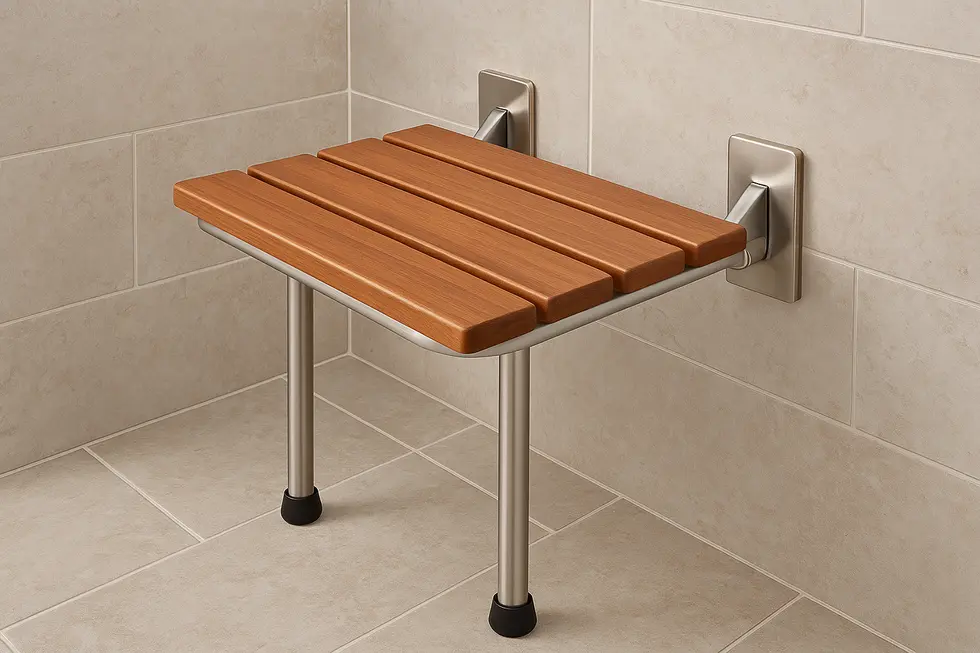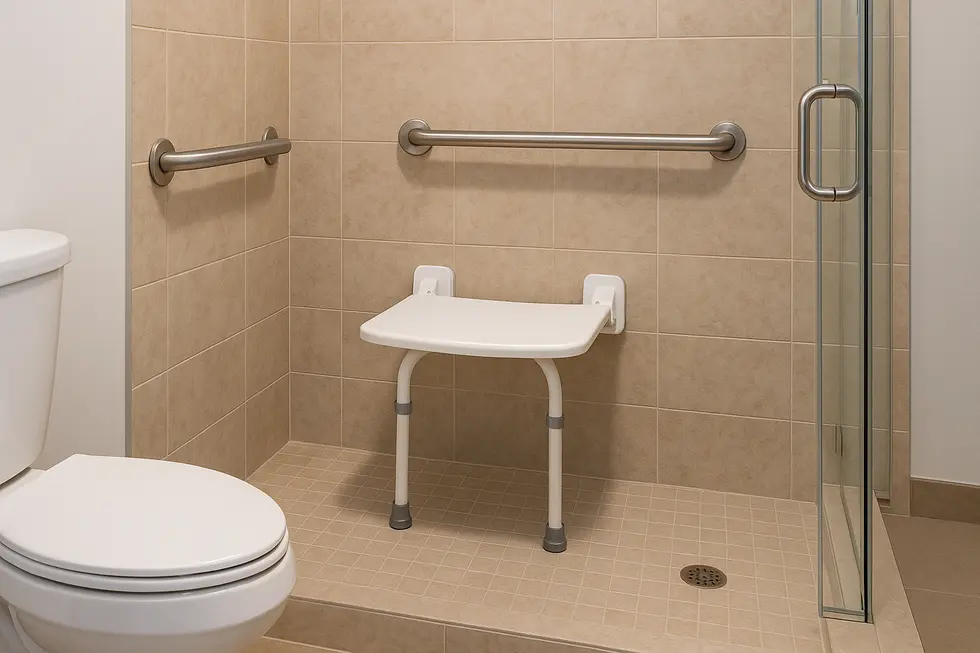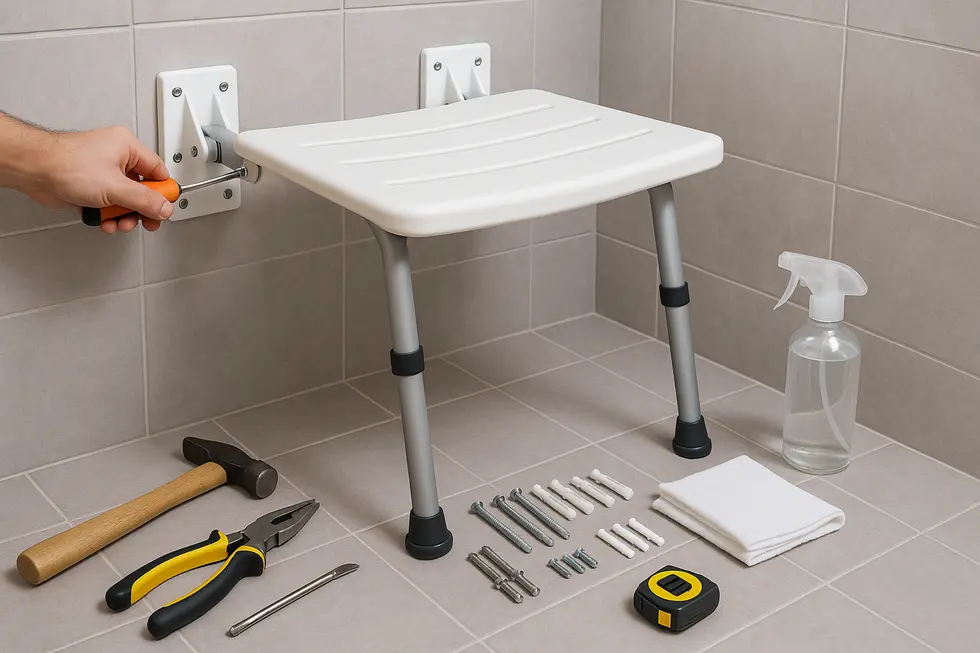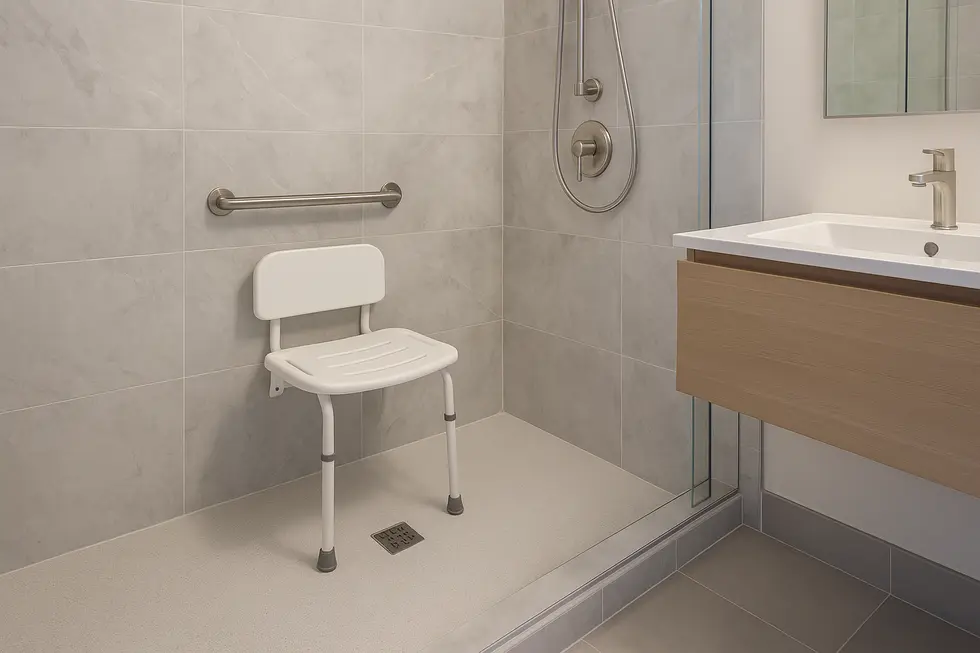Shower Seat
Enhancing Bathroom Safety with Wall-Mounted Shower Seats
Wall-mounted shower seats with legs are an essential addition to bathrooms, especially beneficial for families who prioritize safety and accessibility. These seats offer robust support by combining wall attachment with leg stability, making them suitable for all users, including seniors and individuals with mobility challenges. This article explores key design and material considerations, important ADA compliance and safety standards, as well as practical advice on installation and maintenance, ensuring a comprehensive understanding of these valuable bathroom aids.
Balancing Form and Function: Smart Design and Durable Materials for Wall-Mounted Shower Seats with Legs

A wall-mounted shower seat with legs lives at the intersection of architecture and ergonomics. Its design must cope with fluctuating moisture, shifting body weight, and the tight footprint of modern bathrooms. The starting point is structural backing. Blocking placed between studs before tile goes up creates a rigid, load-bearing surface so the hinges never fight hollow drywall alone. Once anchored, the seat’s swing-down legs share the load, directing part of the weight to the floor and easing stress on fasteners—an essential safeguard for heavier users or uneven walls.
Because every bathroom floor slopes slightly for drainage, telescopic or micro-adjustable leg ends help find a true, wobble-free stance. A brisk quarter turn levels the seat without shims, protecting tile and grout. Many designers also add an automatic leg-deploy mechanism: unfold the bench and the legs drop into place, so users with limited reach need not wrestle with hardware.
Surface texture matters as much as strength. Lightly grooved phenolic or PE tops shed water fast, stay non-porous, and wipe clean in seconds. Integrated drain slots keep puddles from forming under thighs, lowering slip risk. Where a warmer, spa-like look is desired, sealed teak slats provide natural grip and resist rot, though they appreciate a quick oiling twice a year.
Frames built from 304 or anodized aluminum marry high tensile strength with corrosion resistance. Powder-coated finishes add another shield while blending with grab bars and fixtures. Stainless fasteners of matching grade prevent galvanic reactions that might stain grout lines.
Finally, compactness protects circulation space. When folded, a well-engineered seat projects no more than two inches, clearing walkers or wheelchairs. Pairing the seat with a hand-held shower on a slide bar completes an adaptable, user-centred zone. For homeowners preparing to retrofit, this step-by-step guide on how to install a wall-mounted shower seat explains preparation and code checks.
Choosing balanced design features and resilient materials transforms a simple bench into lifelong bathroom infrastructure—capable of supporting daily routines with quiet reliability.
Building Confidence in the Shower: ADA Rules and Safety Essentials for Wall-Mounted Seats with Legs

Meeting ADA guidelines is more than a legal checkbox—it establishes a predictable, comfortable experience for anyone who relies on a wall-mounted shower seat with legs. The standards specify that the seat must hold at least 250 lb, yet many modern benches are engineered for far higher loads. Extra legs transfer a share of that weight to the floor, reducing stress on wall anchors and minimising long-term maintenance.
Dimensions matter as much as strength. A sitting surface placed 17–19 inches above the finished floor lets wheelchair users slide across without awkward lifting, while a minimum depth of roughly 15 inches offers full thigh support. Depth alone, however, is not enough; the underside framework should guide water away so pooled moisture never compromises grip or corrodes hardware. Stainless steel rated at 304 grade or better remains the gold standard because it resists rust and pairs well with non-porous tops such as phenolic or sealed teak slats. These materials naturally inhibit bacteria, a quiet but critical safety benefit.
Operation force is another overlooked detail. ADA section 309.4 caps the effort required to deploy a folding seat at 5 lb. Lift-assist hinges and counterbalanced legs meet this target, meaning a user with limited arm strength can flip the platform down—or back up—without strain. Rounded front edges prevent scrapes, and subtle texture or molded ridges on the sitting surface create friction even when soap films the area.
Proper installation completes the safety triangle of load, dimension, and usability. Structural blocking in the wall—often solid wood or metal plate—must align with the mounting bracket. Where blocking is impossible, specialty fasteners rated for grab bars can be substituted, but only when accompanied by legs that share the load. Adjustable rubber feet compensate for slightly uneven tile, ensuring every leg meets the floor simultaneously and eliminating wobble. For a step-by-step look at correct placement, see this in-depth safety wall-mounted shower seat guide.
When all these elements converge, the result is a secure perch that encourages independence and preserves dignity. An example of a high-capacity model demonstrates how contemporary designs can reach 800 lb ratings while remaining sleek and easy to fold.
Securing Safety: Proper Installation and Ongoing Care for a Wall-Mounted Shower Seat with Legs

Getting the most from a wall-mounted shower seat with legs begins long before the first shower and continues with a simple but consistent maintenance routine.
Installation that locks in confidence starts with accurate measurement. Sit the principal user on a kitchen chair, measure floor-to-knee height, then transfer that number to the shower wall. This guarantees the folded-down seat lets feet rest flat, preventing sliding or overreaching. Next, map the seat’s footprint inside the stall, confirming it clears doors, mixers, and existing grab bars. Where the mounting rail will intersect studs, add 2 × 10 blocking if needed; tile alone cannot carry the load.
Use corrosion-resistant concealed brackets—marine-grade stainless or ribbed aluminum—to distribute weight across the blocking. Fasten with 3-inch stainless lag bolts driven through the grout line, not the tile face, to avoid cracking. Once the wall connection is solid, extend the seat’s legs and adjust the threaded feet until both legs rest squarely on the shower floor without lifting the wall hinges. Tighten locknuts so vibration will not loosen them. Before anyone sits, apply body weight gradually while feeling for flex; any wobble means a bolt has missed its stud or a leg is out of plumb and must be corrected. A brief professional check, or following a detailed step-by-step installation guide, can avert expensive tile repairs later.
Low-effort maintenance keeps reliability high. Once a week, wipe teak, HDPE, or phenolic slats with mild soap, then rinse. Quarterly, fold the seat up and inspect brackets, leg joints, and rubber feet for rust or wear; replace components at the first sign of pitting. Retighten all fasteners to manufacturer torque values. A thin bead of clear silicone around each wall penetration prevents water wicking behind the tile. If the floor is especially slick, a small non-slip mat beneath each leg adds redundant grip without altering drainage.
Final thoughts
Wall-mounted shower seats with legs exemplify the fusion of safety, functionality, and aesthetic appeal crucial for modern bathrooms, particularly those designed to accommodate family or accessibility needs. By selecting the right materials, ensuring compliance with safety standards, and adhering to proper installation and upkeep, these seats can notably enhance the bathroom experience. Families can enjoy the peace of mind that comes with implementing thoughtful upgrades that ensure comfort and security.
Experience a new standard of clean with PEGABidet—designed for comfort, safety, and independence. Join thousands who trust us to make personal care simple and dignified. Contact us at contact@pegabidet.com
About us
PEGABidet is a brand owned by L.A NEXTGEN LLC, based in California. We design intuitive, hygienic, and accessible bathroom solutions that prioritize safety, dignity, and independence. Our mission is to make personal care effortless and empowering for people at every stage of life.

